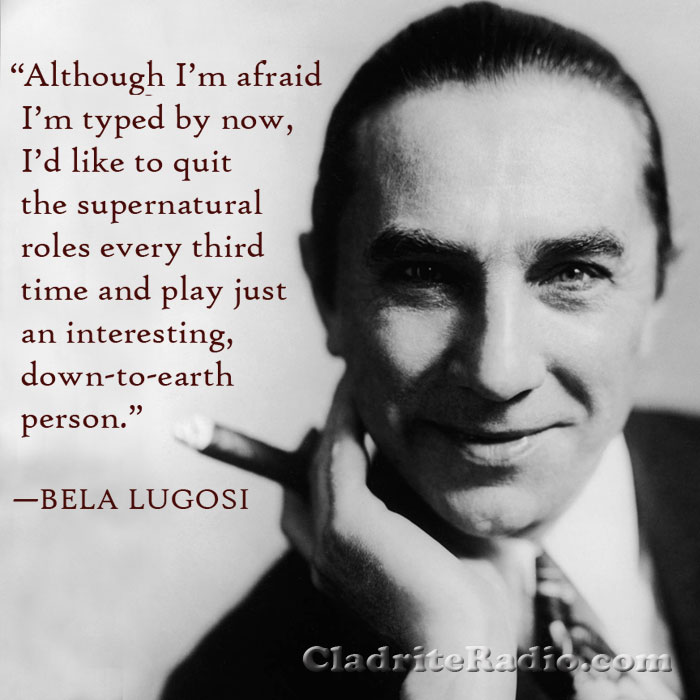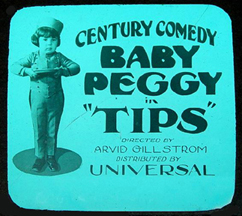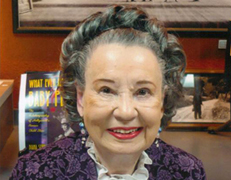Here are 10 things you should know about Paul Muni, born 125 years ago today. The star of stage and screen was celebrated for his versatility; early in his career, some even compared him to Lon Chaney.
Tag: Lon Chaney
Happy 114th Birthday, Dorothy Mackaill!
Actress Dorothy Mackaill was born 114 years ago today in Kingston upon Hull, Yorkshire, England. Here are 10 DM Did-You-Knows:
- Mackaill’s parents separated when she was eleven, after which she lived with her father.
- As a teen, she left home for London in pursuit of a career acting on the stage. After a short sting in Paris, she met a Broadway choreographer who convinced her to move to New York City.
- That move paid off, as she was soon made a Follies Girl in the The Ziegfeld Follies and met actresses Marion Davies and Nita Naldi.
- In 1920, Mackaill made her motion picture debut in a movie mystery, The Face at the Window, and also appeared in a number of comedies opposite actor Johnny Hines.
- In 1921, Mackaill’s career received another boost when she was cast in Bits of Life, along with Anna May Wong, Noah Beery and Lon Chaney.
- Mackaill’s star-making role came in 1924, when she appeared in The Man Who Came Back opposite leading man George O’Brien. She was also named, along with Clara Bow and eleven other starlets, a WAMPAS Baby Star.
- The arrival of talking pictures didn’t appear to present a problem for Mackaill—she worked steadily in the early years of the sound era—but she was signed with First National Pictures, which merged with Warner Brothers in 1928, and when her contract ended in 1931, Warners declined to renew it.
- Mackaill continued to work as a free agent, but the roles came less frequently—she made just eight pictures in the next six years before retiring in 1937 to care for her ailing mother.
- In 1955, Mackaill moved to Honolulu, Hawaii, a locale she’d very much enjoyed while filming His Captive Woman there in 1929. She resided at the deluxe Royal Hawaiian Hotel on the beach at Waikiki, swimming in the ocean on a near-daily basis.
- Mackaill acted just three times after 1937, making a single appearance on the anthology television series Studio One in Hollywood in 1953 and two guest spots (in 1976 and 1980) on Hawaii Five-O, which certainly made for an easy commute to work. When she passed away in 1990, her ashes were scattered off her beloved Waikiki beach.
Happy birthday, Dorothy Mackaill, wherever you may be!

Happy 134th Birthday, Bela Lugosi!
Bela Lugosi was born Béla Ferenc Dezső Blaskó in Lugos, Kingdom of Hungary (now Lugoj, Romania), not far from Transylvania, 134 years ago today. Here are 10 BH Did-You-Knows:
- Lugosi was the youngest of four children; his father was a banker. He dropped out of school at age 12 and began acting, playing small roles in regional theatre, just after the turn of the 20th century. He moved to Budapest in 2011 and began working (though still limited to minor roles) with the National Theatre of Hungary.
- Lugosi volunteered to serve in the Austro-Hungarian Army during World War I; he served in the infantry, rising to the rank of captain in the ski patrol. He was injured three times.
- Coming under scrutiny for his activism in creating an actor’s union in Hungary during the 1919 revolution, Lugosi fled the country, first to Vienna and later to Berlin. He soon came to the United States, landing in New Orleans in December 1920 as a member of the crew on a merchant ship.
- Lugosi appeared in 12 motion pictures in Hungary 1917 and ’18 and in several more in Germany. Once in the United States, he made his way to New York, where he became active in Hungarian theatre. He made his Broadway debut in 1922 in the play The Red Poppy. His American film debut came in 1923 in The Silent Command. He would soon make several other pictures, all filmed in and around NYC.
- In 1927, Bela Lugosi was cast as Count Dracula in the Broadway production of a play adapted from Bram Stoker‘s novel. Lugosi was a sensation in the role, but he was not the top choice for the role of the Count as the play was being developed as a movie. Director Tod Browning hoped to cast Lon Chaney, a much bigger name than Lugosi and someone Browning had worked with frequently, in the role, but Chaney’s tragic death opened the door for Lugosi to play the role he’d made famous in the legitimate theatre.
- The film was a great success, and Lugosi soon realized that the role of Count Dracula was both a blessing and a curse, as he found himself quickly—and permanently—typecast as a horror star.
- Lugosi, who had worked to establish an actor’s union in Hungary, was one of the organizers of the Screen Actor’s Guild (he was member no. 28).
- Lugosi was married five times, with only one of the marriages lasting more than three years (Lugosi and his fourth wife, Lillian Arch, remained together for just over twenty years). His third marriage, to a wealthy San Francisco widow named Beatrice Weeks, ended after just a few days when Weeks discovered he was carrying on an affair with actress Clara Bow.
- By the late 1930s, Lugosi, who suffered from sciatic neuritis, was addicted to the painkillers morphine and methadone. He would struggle with his dependency on these drugs for the rest of his life, and his career would suffer because of it.
- Though a rumor persisted of a feud between Lugosi and fellow horror star Boris Karloff, both men’s children insisted that, though the two men weren’t close, there were no hard feelings between them. The two actors appeared in seven films together: The Black Cat (1934), The Raven (1935), The Invisible Ray (1936), Son of Frankenstein (1939), You’ll Find Out (1940), Black Friday (1940) and The Body Snatcher (1945).
Happy birthday, Bela Lugosi, wherever you may be!

Happy 133rd Birthday, Bela Lugosi!
It’s interesting to consider how sad a figure Bela Lugosi—born Béla Ferenc Dezsõ Blaskó 133 years ago to day in Lugos, Kingdom of Hungary (now Lugoj, Romania)—remains in the minds of so many today. After all, he enjoyed a long and largely successful acting career, enjoying stage success first in his native land and later in the United States.
He appeared in his first film in Hungary in 1917, but soon thereafter emigrated to Germany (where he made a few more films) before finally arriving in the U.S.
His acting career began just after the turn of the 20th century in provincial theatres before he moved to Budapest in 1911. There, he worked with the National Theatre of Hungary from 1913-1919 (with some time off to serve as an infantryman in the Austro-Hungarian Army in the First World War).
A union activist, he felt at risk in Hungary during the Hungarian Revolution of 1919, so he left first for Vienna before settling in Berlin, where he continued to act. Eventually, he took an assignment as a merchant marine and made his way first to New Orleans and then to New York, where he underwent legal immigration inspection at Ellis Island in 1921.
In New York, Lugosi formed a stock company with a group of fellow Hungarians that toured the East Coast. He made his Broadway debut in 1922 and continued to work on the Great White Way for several years.
Lugosi first did film work in Hungary, and continued to appear in films in Berlin. His first American film work (he had previously appeared in movies in both Hungary and Germany) was in a 1923 melodrama called The Silent Command (and if you can believe it, he appeared in 48 pictures, all totaled, before Dracula).
In 1927, Lugosi was cast in the role that would prove a blessing and a curse for the rest of his life in a Broadway production of Dracula, based on the Bram Stoker novel. The production ran for 261 performances before touring the country, and the acclaim Lugosi received in the role of the bloodthirsty count led to him being offered the same role in the Tod Browning picture (though it’s said in some circles that he wasn’t the first choice for the role; rumors have long had it that Lon Chaney was originally slated for the role before his premature death in 1930).
Dracula rocketed Lugosi to stardom, but thereafter he found it difficult to get any roles outside the horror genre. Not that he didn’t pursue non-horror roles—he did, in earnest—but they were not forthcoming, and by the mid-1930s, when horror films became less of a focus at Universal Studios, Lugosi found himself assigned to the studio’s non-horror B unit, which led to small roles in lesser pictures. As a result, he frequently accepted leading roles in low-budget thrillers produced by Poverty Row companies, roles that helped pay the bills but did little to broaden the range of roles to which he was suited in the eyes of producers and the moviegoing public.
To make it worse, Lugosi suffered badly with sciatica, which doctors treated with morphine and, later, methadone. So he endured a lengthy battle with addiction to those medications, and when news spread of his reliance on painkillers, his career suffered even more.
By the 1950s, Lugosi was reduced to playing the villain in very low-budget comedies (Bela Lugosi Meets a Brooklyn Gorilla) and the even lower-budget unintentional comedies churned out by legendary (if inept) auteur Edward D. Wood, Jr. Finally, on August 16, 1956, Lugosi’s heart gave out.
Lugosi seemed a goodhearted sort, and one certainly wishes his career (and personal life—he was married five times) had worked out more to his favor, but his pictures continue to bring joy (and chills) to movie lovers today (TCM is teaming with Fathom Events to screen Dracula, in a double bill with Universal’s Spanish language version of that film, starring Carlos Villarías, in theatres around the country on October 25th and 28th). That’s a legacy that anyone might envy.
Whatever Happened to Baby Peggy?
 Over the past couple of years, we’ve seen the ads for the TCM Classic Cruises and thought, “That would be fun.”
Over the past couple of years, we’ve seen the ads for the TCM Classic Cruises and thought, “That would be fun.”
But then we can’t help but think, “But it would have been much more fun ten or fifteen years ago.” The sad truth is, there just aren’t that many performers left from the 1930s and ’40s and, of course, there are even fewer that date back as far as the silent movie era.
In that latter category, there’s Mickey Rooney and Carla Laemmle (who was never a big star, but did appear in some big pictures, including Lon Chaney‘s Phantom of the Opera and the 1931 version of Dracula starring Bela Lugosi).
And then there’s Diana Serra Cary (née Peggy-Jean Montgomery), who was one of the biggest stars of the silent era, albeit at a very young age.
 Cary, then known as Baby Peggy, made her film debut in 1921. She went on to make more than 150 shorts for Century Pictures before signing with Universal Pictures in 1923 for $1.5 million a year. Jackie Coogan, the top child star of the day, was growing up, and Universal was hoping Peggy, who would now be starring in feature-length pictures, pick up the slack left by his declining popularity.
Cary, then known as Baby Peggy, made her film debut in 1921. She went on to make more than 150 shorts for Century Pictures before signing with Universal Pictures in 1923 for $1.5 million a year. Jackie Coogan, the top child star of the day, was growing up, and Universal was hoping Peggy, who would now be starring in feature-length pictures, pick up the slack left by his declining popularity.
Peggy is to have received more than 1.2 million fan letters during her relatively brief time in the spotlight, but by 1925, the bottom fell out of her career. Her father played it tough in negotiating with independent producer Sol Lesser, for whom she had made a couple of features, and Lesser not only declined to work with her any more, he used his influence in Hollywood to see that no one else would hire her, either. She made only one more silent movie, a small role in the 1926 film April Fool, and then began touring in vaudeville.
 With the crash of 1929, Peggy’s family fortunes went in the tank. Her parents had spent most of her earnings, and what investments they had made were now worthless. She eventually stooped to doing extra work in the 1930s, but by 1938, at the age of 19, she was through working in pictures.
With the crash of 1929, Peggy’s family fortunes went in the tank. Her parents had spent most of her earnings, and what investments they had made were now worthless. She eventually stooped to doing extra work in the 1930s, but by 1938, at the age of 19, she was through working in pictures.
In later years, Peggy became a writer and author, publishing a number of books about Hollywood, including her 1996 memoir, Whatever Happened to Baby Peggy?. She’s still active today, making personal appearances at film festivals and revival houses.
Beginning at 8 p.m. on Monday, December 3, Turner Classic Movies will air a new documentary about Peggy’s life and career, Baby Peggy: The Elephant in the Room (2012), and four of her pictures (most of which are lost films), three shorts—Carmen Jr. (1923), Peg o’ the Mounted (1924), and Such Is Life (1924)—and one feature, Captain January (1924).

